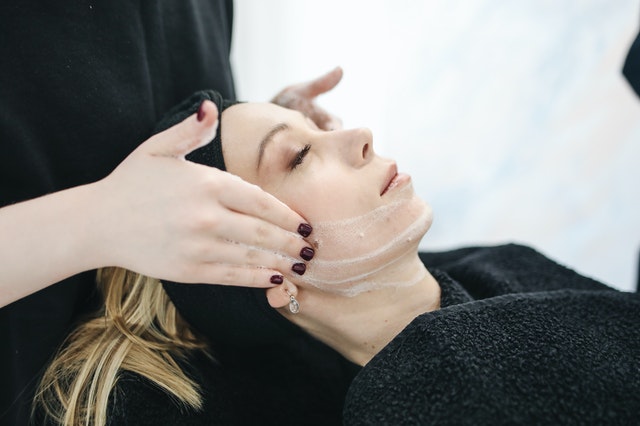
Just like you change clothes in your wardrobe to get ready for an upcoming warmer season, it is also essential to tailor your skincare routine to help your skin readjust to temperature changes and other environmental factors. In contrast to harsh winter weather that leaves your skin feeling dry and dull, spring brings more exposure to the sun. However, it only means that your body will need even more water, so keeping yourself hydrated remains necessary.
In this article, you will learn more about the essential steps needed to transition your skin from winter to spring and bring its healthy glow back. Apart from staying hydrated, you will have to start exfoliating regularly, get back to applying sunscreen daily, switch to lighter textured skincare products, and spring clean both your beauty products and brushes. Continue reading to prep your skin for warmer months correctly.
Use a Gentle Cleanser
One of the best ways to get rid of oil, dirt, and other impurities is to use a gentle cleanser. Avoid using bar soaps or foamy cleansers that can strip the skin of its natural oils. Instead, use a creamy cleanser that will clean your face without drying it out.
Look for products that contain glycerin, sodium lactate, or aloe vera. Apply a pea-sized amount of cleanser on your wet face and gently massage it in circular motions until all impurities are removed.
Cleanse, Exfoliate, and Moisturize
It is necessary to thoroughly cleanse your skin in the morning and before going to bed. During cold months, it is very easy to clog pores with dirt and dead skin cells, which can actually cause dryness or blackheads. These can be prevented by exfoliating regularly, which will not only leave you with a fresh face but also prevent acne. Do not forget to exfoliate your neck, hands, knees, and elbows because these areas tend to get dry and flaky during winter. In order to prevent ingrown hairs and razor burns, you should exfoliate your legs and underarms at least once a week. It is best to do this before shaving.
To treat acne and remove acne scars and blemishes, you can also try salicylic acid treatment – it will help your skin keep clear of breakouts and pimples, as well as keep it hydrated. You have to apply a salicylic acid-based toner on your face after cleansing. Then, rub a good-quality moisturizer into your skin to help it retain moisture (if you still haven’t found your go-to moisturizer, you might want to read about natural remedies, e.g., hemp seed oil: what are the skin benefits of hemp seed oil?).
Moisturize Your Skin Correctly
After cleansing, it is essential to apply a moisturizer. However, you should know that not all moisturizers are ideal for all skin types, especially dry. In order to determine which type of moisturizer will work best for you, you should first identify your skin type. Then, you can choose the moisturizer accordingly:
- Oily. For oily skin, choose an oil-free product that has a lightweight texture. Oily skin tends to be greasy and shiny, so avoid heavy creams and opt for light lotions instead. You may also need to switch to alcohol-free toners and makeup products that do not clog pores.
- Dry. For those with dry skin, pick a cream or balm with shea butter or cocoa butter. If your face is extremely dry, you may need to use both an oil-free moisturizer and a heavy cream.
- Combination. If your skin is both oily and dry, you should use an oil-free moisturizer with a light texture, or a suitable combination of two products.
- Sensitive. If you have sensitive skin, look for products that are hypoallergenic and fragrance-free. Choose moisturizers that are formulated to restore the natural moisture level of your skin.
Use Sunscreen Daily
During the warmer months, it is essential to apply sunscreen daily to prevent skin damage from the sun’s ultraviolet rays. Sunscreen not only prevents sunburn but also helps to reduce wrinkles and age spots. The SPF numbers on most beauty products refer to how long the product will protect your skin after application.
For example, if you apply SPF 30 lotion, it will protect your skin for 30 times longer than not wearing any sunscreen at all. Ideally, you should apply sunscreen 30 minutes before going out in the sun and reapply it every two hours.
Cleanse Your Makeup Brushes
To keep the bacteria from your makeup brushes under control, it is recommended that you cleanse them regularly, ideally after using each brush. You can do this with a gentle cleanser, such as baby shampoo or dishwashing liquid, or even rubbing alcohol. After this, you should rinse your brushes clean and then let them air dry.
Get Rid of Expired Skincare Products
If you have old products that are more than 6 months past their expiration dates, you should get rid of them. Expired skincare products can cause skin irritation and other problems due to bacteria and germs. If you are unsure of your skincare products’ expiration dates, check out their labels.
Final Word
The transition from winter to spring can be a difficult one for your skin, especially if you do nothing to prepare for it. With so many external factors that can damage or dry out your skin during winter, it becomes important to apply a good skincare routine and stay hydrated to prep it for spring.
Now that you know how to transition your skin from winter to spring and bring its natural glow back, what are you waiting for? Start using these tips today to get the best results!



